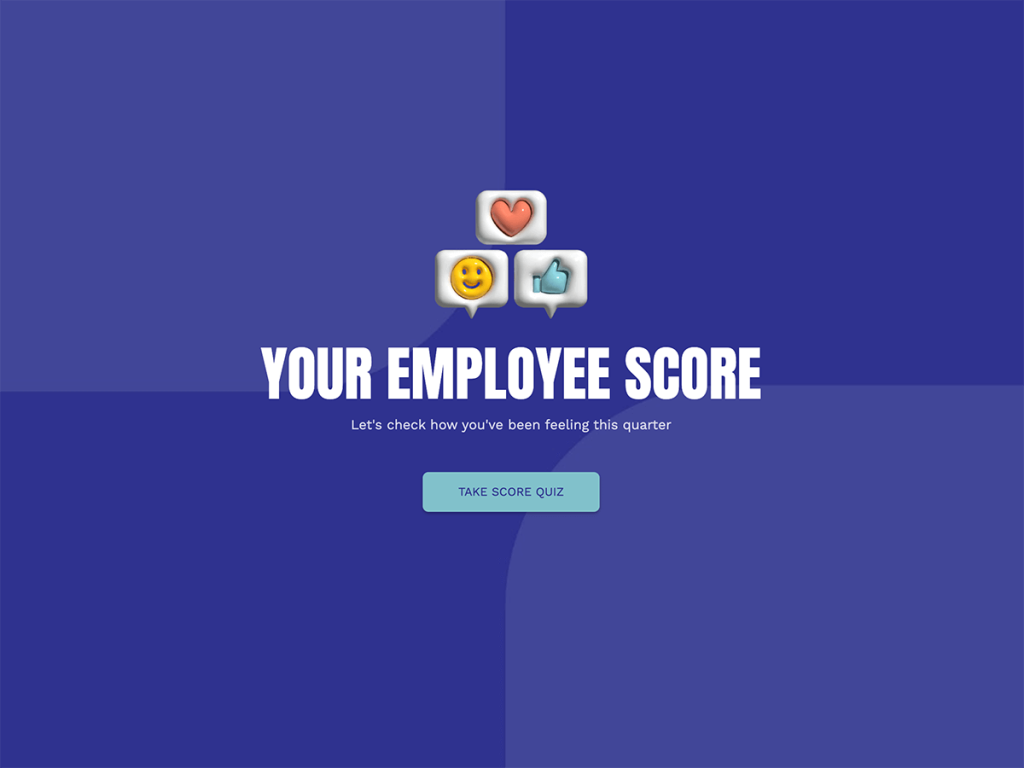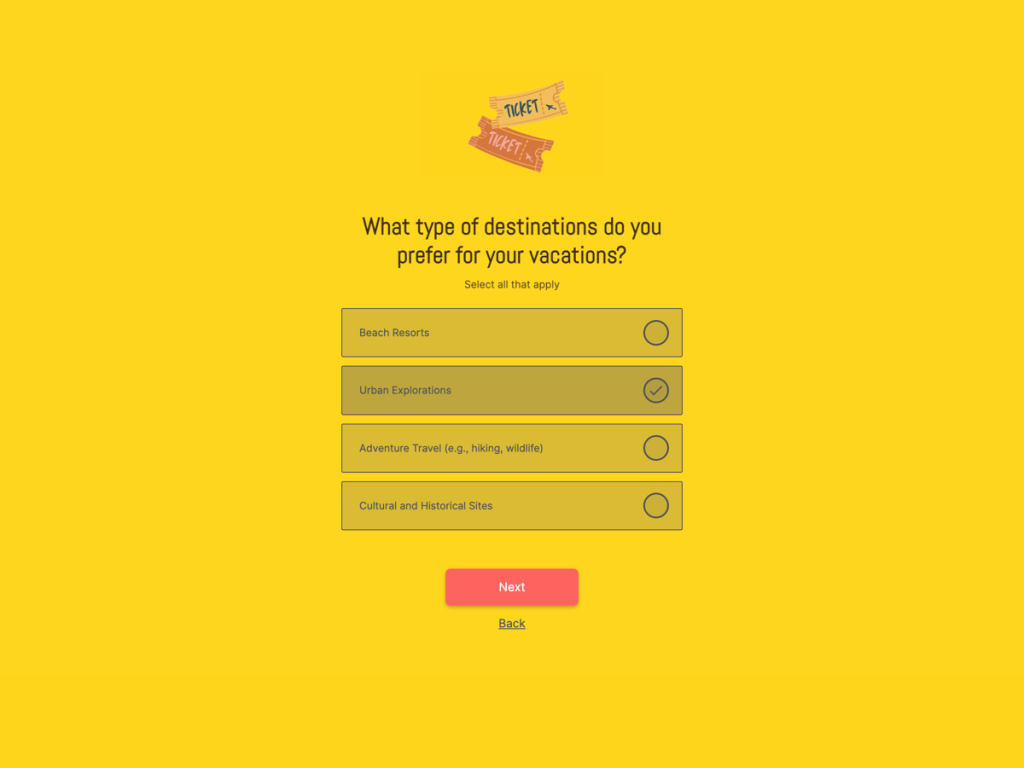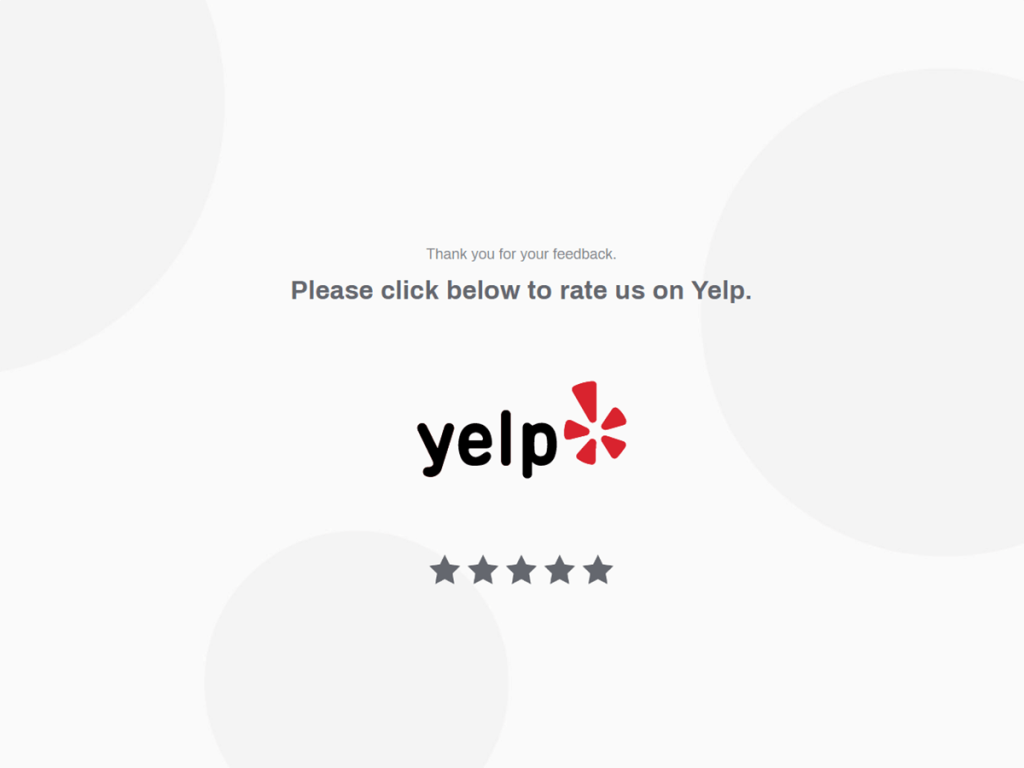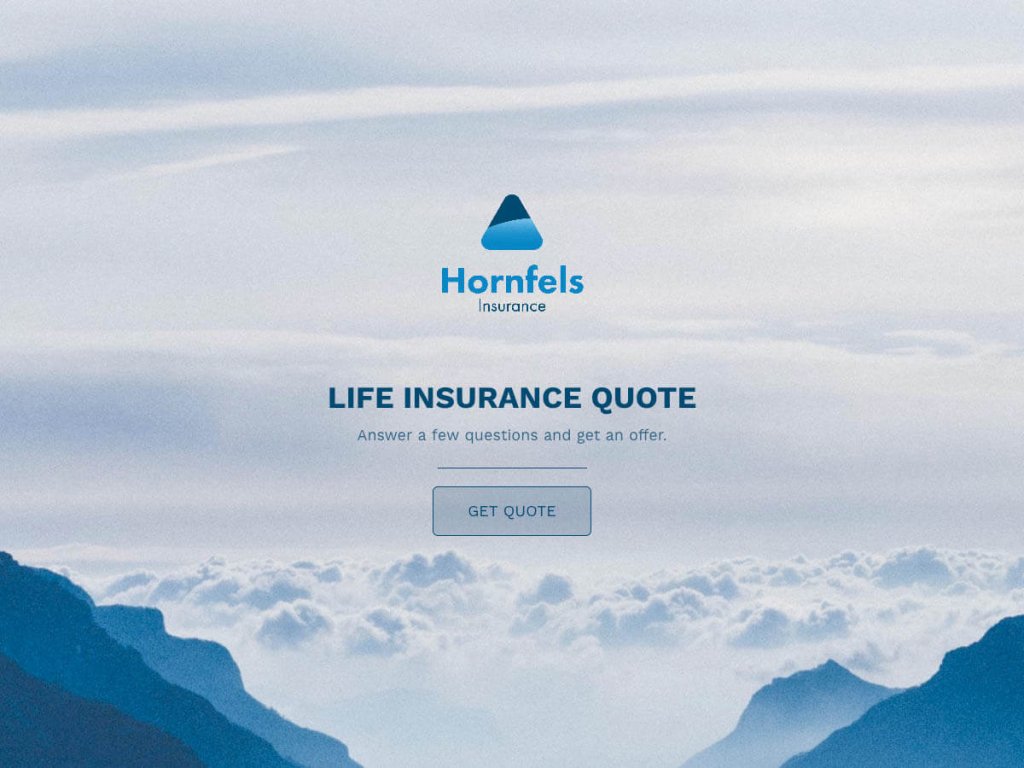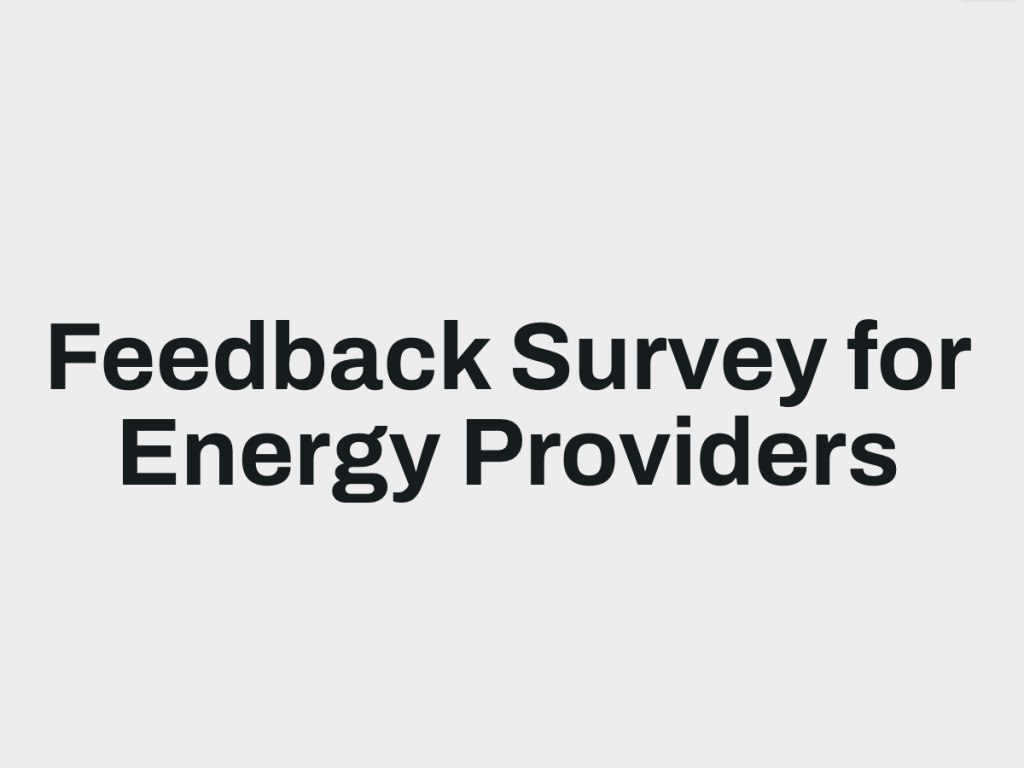Leads are the lifeblood of any growing business. However, hunting them down can exhaust time and resources from your sales and marketing teams.
With the evolution of AI and automation tools, it almost seems like you're doing your company a disservice by not incorporating these types of software into your workflow.
That's why more companies are embracing automation tools to help generate and qualify leads in the background while freeing up staff to focus on closing deals.
But is lead generation automation right for your business?
Well, it depends.
In this post, we'll break down the pros and cons of automated lead generation so you can make an informed decision.
Here is an overview of the pros and cons:
✅ Lets you scale lead gen efforts
❌ Can feel impersonal to prospects
✅ Frees up staff for high-value tasks
❌ Requires honing campaigns over time
✅ Helps capture more website visitors
❌ Potentially lower quality leads
By the end, you’ll have a solid grasp of what automation can (and can't) do for your pipeline.
Automated Lead Generation: What Is It?
Before we dissect the pros and cons of automated lead generation, it helps to understand precisely what it is.
At a basic level, it leverages software tools to help manage and generate leads in the background.
Rather than having marketing staff manually handle every lead nurturing campaign, website form submission, and sales inquiry, automation tools take over some of the heavy lifting.
The days of cold calling individuals and sending emails/SMS messages one by one are quickly becoming a thing of the past.
This includes workflows that automatically respond to web form fills with drip email campaigns, score inbound leads based on engagement metrics, and even trigger SMS or chatbot messaging when certain conditions are met.
The goal is to systemize and scale previously manual lead capture efforts for higher output with fewer active hours needed from your staff.
When properly implemented, a lead automation system can act as a fully self-sufficient member of your demand generation team!
Steps For Doing Lead Generation Automation Correctly
Automating parts of your lead generation strategy can drive significant efficiency gains, but only if implemented correctly.
Without thoughtful setup and ongoing optimization, your automated campaigns could flop or even backfire.
So, what are some tactical steps for deploying automated marketing strategies the right way?
For starters, integrate with your core sales and marketing tools.
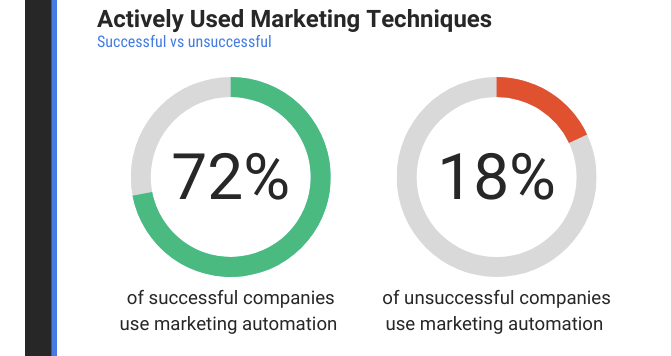
Rather than operating as a siloed solution, your software should connect CRM data, email platforms, landing pages, and more.
This allows for customization based on individuals and synchronization across channels.
You’ll also want to perfect your automated workflows over time.
Treat initial email or LinkedIn sequences as MVPs, not set-it-and-forget-it campaigns.
Analyze response metrics to identify messaging missteps and optimize content/timing for better ongoing performance.
And, of course, don’t completely eliminate the human touch!
What you don't want to do is automate tools to send thousands of emails, SMS texts, or messages via social media every day (unless you're looking to get banned.)
Remember, it's not about generating set-and-forget campaigns.
Automation best complements your strategy through lead scoring, list segmentation, timed follow-ups, and more.
The Advantages of Incorporating Lead Gen Marketing Automation
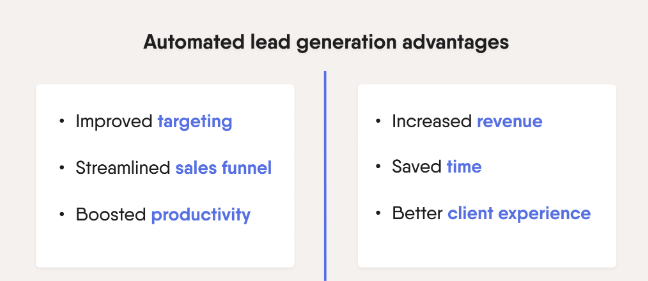
Listen, every growing business needs more leads.
But there are only so many hours in the day for sales calls and manual outreach.
Marketing automation helps fill this gap by managing repetitive tasks in the background so your team can focus on higher-value activities.
Think about it - with the right workflow setup; your computer can handle sending timely emails, tracking opens, scheduling follow-ups, and qualifying subscribers without daily babysitting.
And we're talking personalized, dynamic messages tailored to where each lead is at in their journey.
This allows your marketing crew to cast a wider net and run multiple campaigns aimed at different segments.
No more spraying the same generic emails and hoping for bites.
The automation lets you experiment with different offers, get smarter about what converts, and scale the ideas that work.
Basically, it makes your lead generation process smarter and expands that top-of-funnel as you turn more web traffic into contacts.
The platform handles the tedious stuff, so you don't have to.
What's not to love about that?
The Cons of Utilizing Marketing Automation Tools
Automation tools can, undoubtedly, turbocharge demand generation efforts when applied correctly.
But it’s not all rainbows and unicorns—deploying these platforms has very real tradeoffs.
We've all undoubtedly opened an email or received a message you know the sender literally copied and pasted to hundreds if not thousands of other prospects.
It's a big turn-off, precisely what you want to avoid happening to your prospects with your automation efforts.
While programmed workflows scale personalized outreach enormously, they risk compromising meaningful human connection in the process if overused and further risk losing high-quality leads.
Too many auto-generated messages (like the example above) can make prospects feel like just another number.
Additionally, these systems require close monitoring and campaign optimization over time.
You can’t just “set and forget” the software and expect optimal lead quality down the funnel.
There are also monetary costs associated with premium automation tools, not to mention the learning curve getting ramped up.
Some workflows will invariably miss the mark at first.
Staff will need to fine-tune messaging, segmentation, timing, and more to improve conversion rates—an ongoing process.
And for businesses without someone to manage the automation, inactive accounts or disjointed results could plague them instead.
Top 5 B2B & B2C Lead Generation Tools
When scaling up lead generation efforts, you need the right software muscle behind you.
Rather than bogging down your team with manual tasks, the best platforms automate workflows while providing data-driven insights to boost conversions.
From customized landing pages to SMS marketing and predictive lead scoring, today's tools can amplify your results.
But with hundreds of options on the market, how do you know what's best for your business?
We've got you covered.
After researching the leading players for both B2B and B2C lead generation, we've highlighted the five must-try tools below based on features, rave reviews, and overall value.
From small business-friendly email marketing automation to AI-powered SEM rushers, this list has dominated the space.
Here are our picks for the top 5 lead gen tools to automate your company's workflow:
Involve.me - Landing Pages/Forms
When it comes to creating an automated and aesthetically pleasing sales funnel, look no further than involve.me.
With customizable templates for email, forms, landing pages, and more, there is no better option if your goal is the systematic approach.
Attract more high-quality leads with designs that are easy on the eyes and have a user-friendly interface.
With involve.me's new AI-powered analytics, optimizing and scaling has never been easier for your lead generation needs.
involve.me offers affordable pricing, starting with a free option to try and jumping up to only $29/per month for the basic plan.
Instantly.ai - Email Marketing
Some refer to it as "Gmass on steroids," Instantly.ai allows you to infinitely scale your outreach efforts. Standing to be the best lead generation for email automation outreach.
Some key features include:
Email Warmups
Email Validation and Bulk Domain Testing
Inbox Rotation
Email Templates
With a generous pricing offer starting at 37/per month, it's hard not to turn down a tool like this.
Hubspot - CRM Automation Software
Kicking off the list is the all-in-one behemoth HubSpot's CRM and lead management tool.
Leveraged by tens of thousands of growing businesses, HubSpot takes an integrated approach to managing your core sales and marketing processes.
Beyond robust CRM features to organize leads and deals, the platform centers around creating, optimizing, and tracking inbound campaigns across channels.
This allows for a unified view of all prospects while automating workflows to nurture them based on engagement and activity scoring.
Useful for both B2B and B2C, HubSpot provides easy website/landing page building, blogging, and email.
Their free CRM plan supplies decent lead organization features, while paid tiers unlock segmentation tools, meeting scheduling, predictive lead scoring, and more.
For those looking to sync up marketing and sales under one automated roof, HubSpot remains a top choice.
Hubspot provides access to free tools. However, their pricing can get very pricey once you start looking into their business and enterprise software.
Snov.io - Email Prospecting & Sales Automation Marketing Tool
Next up is Snovio, an automation platform purpose-built for email and SMS-based lead generation.
Beyond automated email abilities, Snov provides integrated features for building contact lists, identifying ideal account targets, enabling direct mail campaigns, and tracking engagement over time.
This allows their users to demand gen at scale based on marketing data rather than generic contact info alone.
Some key functionality areas include:
Email finder to build targeted, deliverable prospect contact lists
Email verifier to guarantee accuracy and inboxes
Email template designer for crafting effective sequences
Predictive lead scoring powered by artificial intelligence
Combined with workflow automation for personalized multi-channel outreach, Snov allows teams to execute sophisticated lead-generation strategies with less heavy lifting.
For contract-first businesses seeking to systemize outbound processes —while still retaining targeting precision—Snovio is absolutely one of the top contenders.
Snov.io offers a limited free trial, jumping up to 39/per month for the starter plan.
Sender - SMS & Email Lead Generation Automation Tool
Rounding out the list is Sender, a tool focused solely on streamlining personalized SMS and email messaging at scale.
Using triggers, workflows, and tracking metrics, Sender allows you to set up automated conversations for lead nurturing or re-engagement with minimal ongoing effort.
Some notable features include:
Drag-and-drop workflow builder for creating targeted sequences
Two-way SMS automation with phone number provisioning
Email marketing automation ability connected to lead data
Engagement scoring based on opens, clicks, and replies
A/B testing for subject lines and content optimization
Perfect for e-commerce companies needing to automate post-purchase touchpoints like order confirmations or product review requests, service businesses wanting appointment reminders and follow-ups, and B2C lead nurturing in general — Sender brings affordable and intuitive functionality.
Wrapping It All Up
While there are some potential drawbacks to marketing automation for lead generation, the pros FAR outweigh the cons.
As long as you're not tackling your outbound strategies with the "set it and forget it" approach, nothing but opportunities are on your horizon.
Just remember to incorporate that human touch into the workflows and continue testing, optimizing, and improving your all-around marketing strategy.
One way to ensure you're addressing your automated lead generation strategy on the right foot is to take advantage of the leading online form and page builder, Involve.me
Looking to turn more website visitors into high-quality leads?
involve.me allows for a seamless creation process for landing pages and forms to capture contacts with ease—zero coding required.
Start converting and building your automated lead generation funnel today with involve.me.
FAQ
What Are the Benefits of Using Lead Generation Automation Tools?
The key advantages of using lead-generation automation tools include the ability to acquire leads quickly, efficiently, and systematically. These tools can help increase the conversion rate, scale up marketing campaigns, and foster better client relationships with potential customers.
What Are the Disadvantages of Using Automation to Generate Leads?
Some of the potential drawbacks include leaving prospects feeling undervalued if not appropriately nurtured, high software costs, and increased training for staff.
How Does Using Automated Lead Generation Tools Help B2B Lead Generation?
Automated lead generation tools can streamline the B2B lead generation process. B2B companies can leverage these tools to increase lead volumes, improve conversion rates, and stay ahead of the competition through efficient content marketing.
Can Automated Lead Generation Help in Efficient Relationship Management?
Yes, lead generation tools often include customer relationship management (CRM) features. This allows businesses to effectively manage and nurture their relationships with potential leads, which could lead to improved lead conversion.
How Do I Choose the Best-automated Lead-generation Tool?
The best automated lead generation tool would offer features like email and SMS marketing, content marketing aids, analytics tools, user-friendly lead generation forms, and efficient customer relationship management. It could also provide a free plan for businesses to try before purchasing.
Is It Better to Acquire High-quality Leads Manually or Use Automation?
Well, it depends because the "best tool" only works as well as the one operating it. Automation software and tools can do wonders for your business if implemented correctly.



